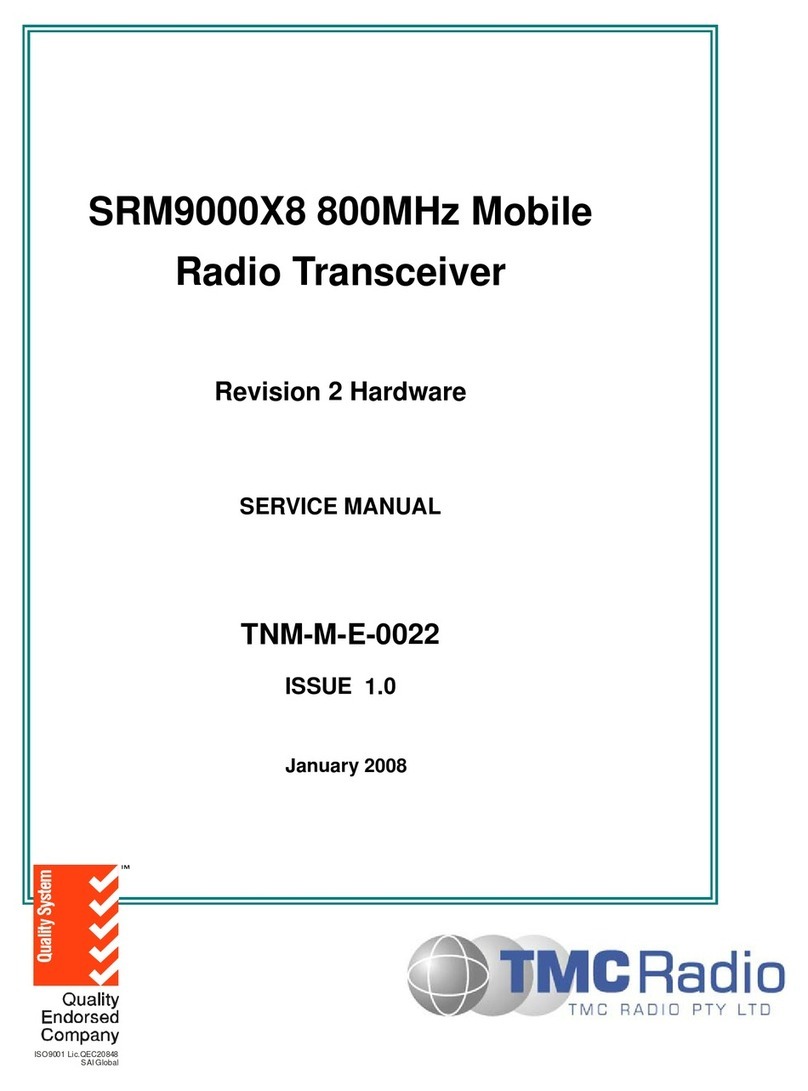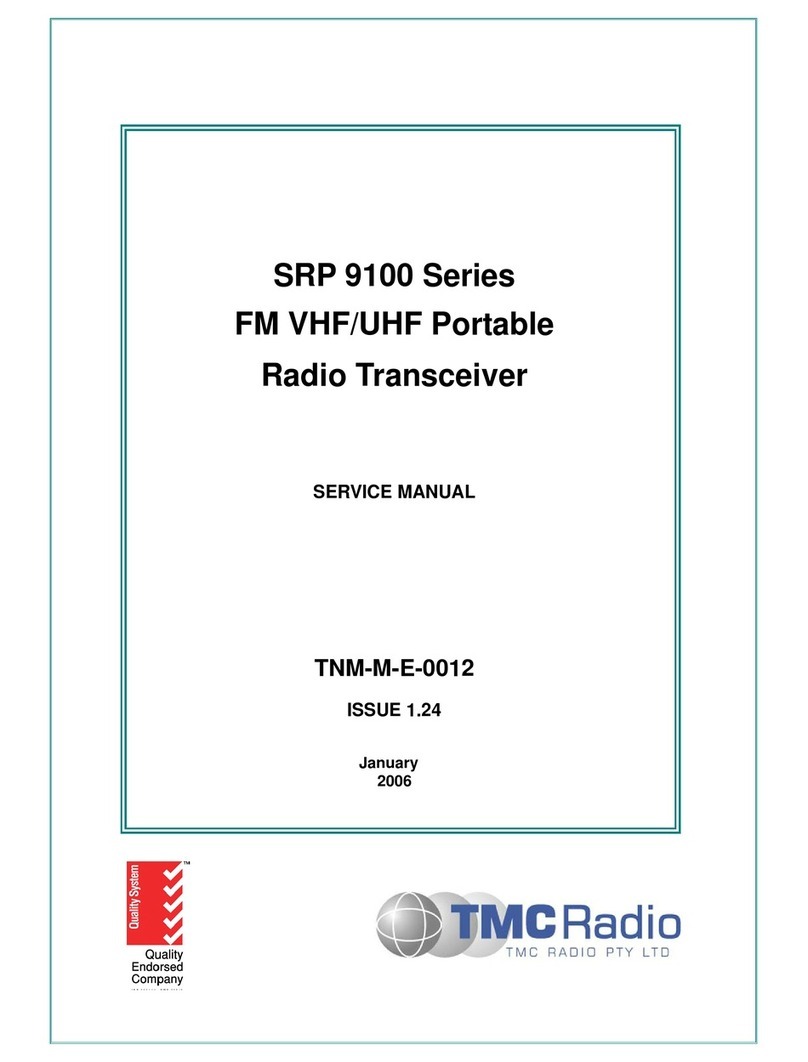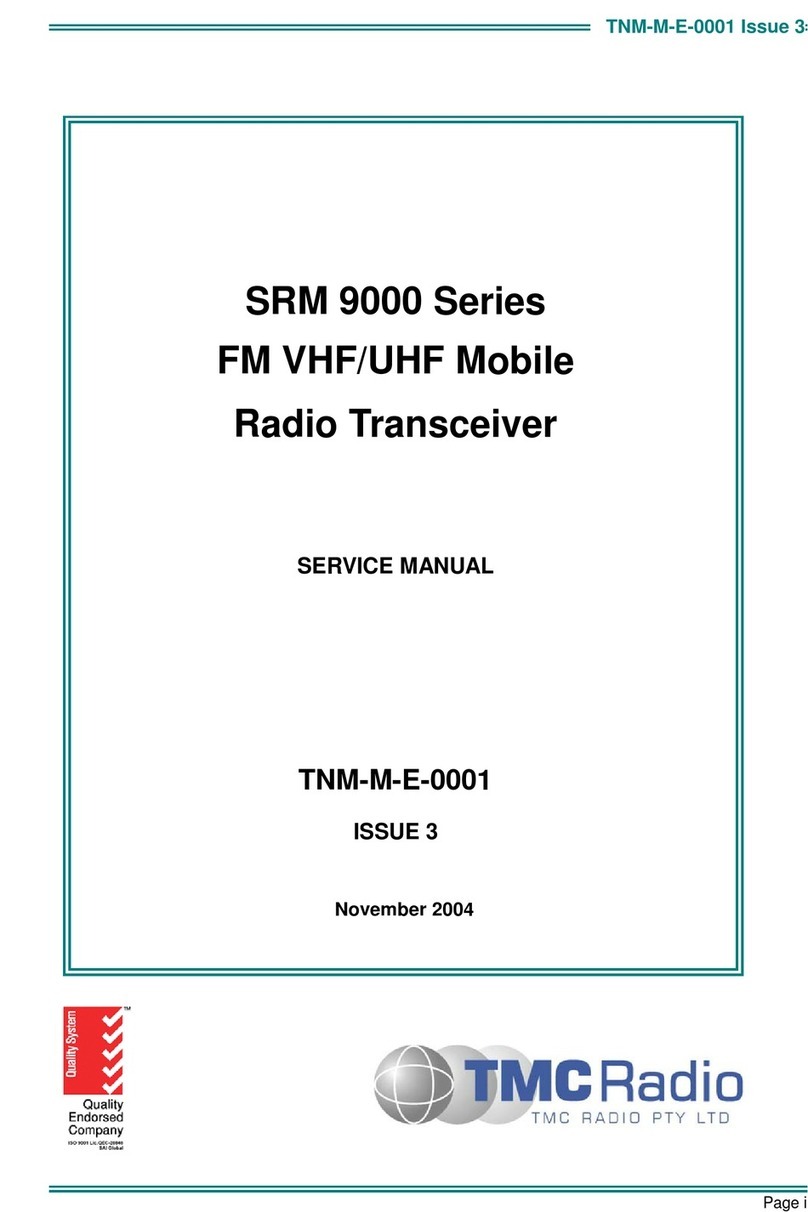SRM9000 SERIES SERVICE MANUAL
© TMC Radio 2006 page ii TNM-U-E-0002 Issue 1
3. TECHNICAL DESCRIPTION...................................................................................................... 22
3.1RECEIVER................................................................................................................................ 22
3.1.1 Front End Filters and RF Amplifier................................................................................. 22
3.1.2 First Mixer and IF Section.............................................................................................. 22
3.1.3 Quadrature Demodulator................................................................................................ 22
3.1.4 Receiver Audio Processing ............................................................................................ 24
3.2 TRANSMITTER.......................................................................................................................... 25
3.2.1 Drivers and PA Stages................................................................................................... 25
3.2.2 Power Control ................................................................................................................ 25
3.2.3 Antenna Changeover and Harmonic Filter...................................................................... 25
3.2.4 Transmitter Audio Processing......................................................................................... 25
3.3 FREQUENCY SYNTHESISER ........................................................................................................ 26
3.3.1 General.......................................................................................................................... 26
3.3.2 PLL................................................................................................................................ 27
3.3.3 VCO’s............................................................................................................................ 27
3.3.4 Negative Bias Generator and Loop Filter........................................................................ 27
3.3.5 Phase Modulator............................................................................................................ 27
3.3.6 Reference Oscillator....................................................................................................... 28
3.4 CONTROL ................................................................................................................................ 28
3.4.1 DSP and PLA................................................................................................................. 28
3.4.2 DSP Clock Oscillator...................................................................................................... 29
3.4.3 PLA PWM...................................................................................................................... 29
3.5 MEMORY ................................................................................................................................. 29
3.6 POWER SUPPLIES..................................................................................................................... 31
3.6.1 Power On Function ........................................................................................................ 31
3.6.2 Power Supplies.............................................................................................................. 31
3.6.2.1 8V Regulator U900............................................................................................. 31
3.6.2.2 5V Regulator U901............................................................................................. 31
3.6.2.3 3.3V Regulator U912 .......................................................................................... 32
3.6.2.4 2.5V Regulator U903.......................................................................................... 32
3.6.2.5 Negative Power Supply U904E/F........................................................................ 32
3.6.2.6 Unswitched Battery (13V8_UNSW_F)................................................................. 32
4. ALIGNMENT (LEVEL 3 SERVICE ONLY).................................................................................. 33
4.1 TEST EQUIPMENT ..................................................................................................................... 33
4.2 TEST SET-UP ........................................................................................................................... 35
4.2.1 COMMS Set up.............................................................................................................. 36
4.2.2 Radio Preparation.......................................................................................................... 37
4.2.3 Alignment Procedure...................................................................................................... 38
4.2.3.1 VCO DAC Alignment .......................................................................................... 38
4.2.3.2 TCXO (Radio Netting Adjustment)...................................................................... 39
4.2.3.3 Rx Front End...................................................................................................... 40
4.2.3.4 Mute Adjustment................................................................................................. 41
4.2.3.5 RSSI................................................................................................................... 42
4.2.3.6 Tx Power............................................................................................................ 43
4.2.3.7 Modulation.......................................................................................................... 44
4.2.3.8 Programming...................................................................................................... 45
4.2.3.9 Customers Radio Personality Data ..................................................................... 45
5. REPLACEABLE PARTS............................................................................................................. 46
5.1 COMMON PARTS ...................................................................................................................... 46
5.2 BAND-SPECIFIC PARTS ............................................................................................................. 47
6. CIRCUIT DIAGRAMS ................................................................................................................. 47































